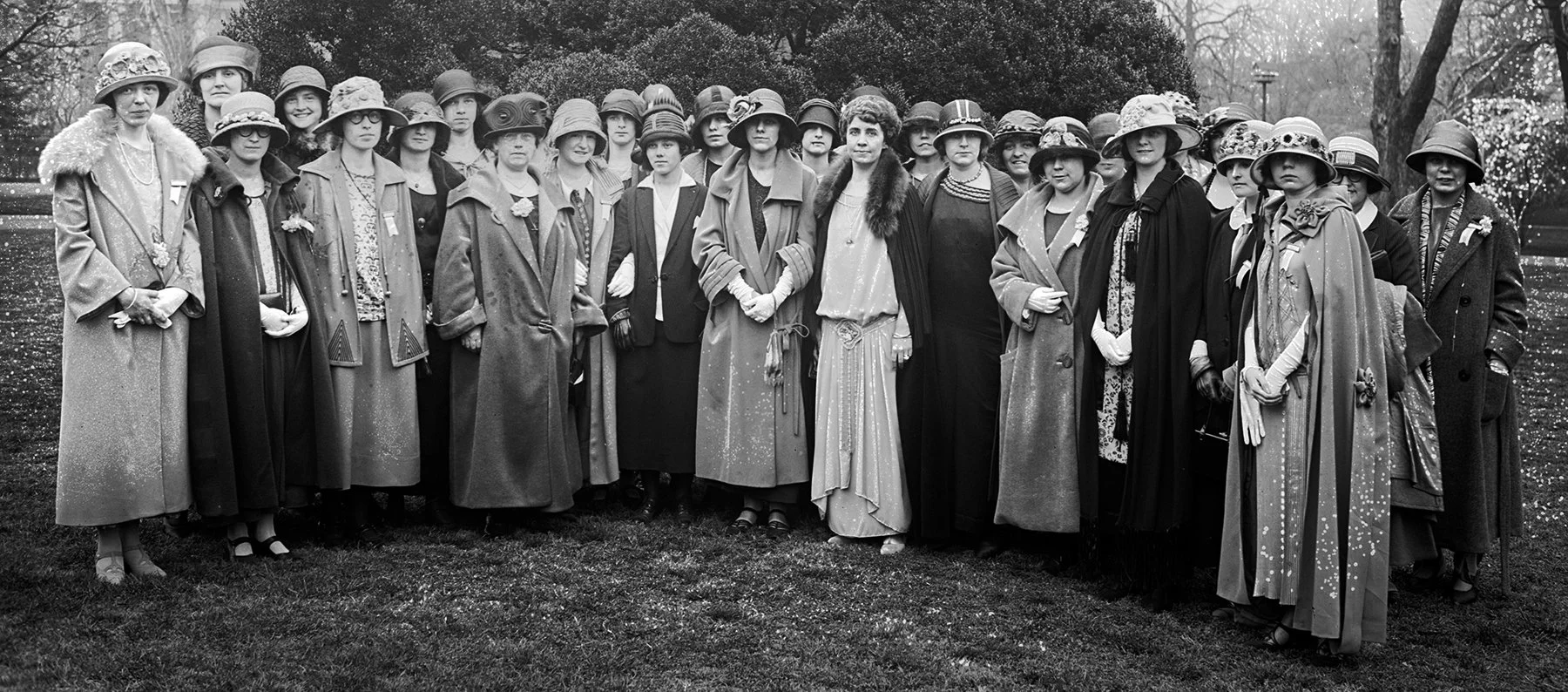An Author Named Grace
Howard Chandler Christy’s portrait of Grace Coolidge
(Forbes Library)
By Nancy Almasi
This article appears in the Winter 2025 issue of the Coolidge Review. Request a free copy of a future print issue.
Marriage is a complicated business, particularly marriage in the White House.
While in Washington, Grace Coolidge played the first lady’s traditional supporting role. She did not express political opinions, nor did she give interviews to the press. Moderns have bridled at Grace’s characterization of marriage as a “double harness.”
Yet Grace’s partner in the harness, our thirtieth president, encouraged the first lady in her pursuits—including in a field she initially considered his: writing.
Evidence of that encouragement—and of the nature of marital reconciliation—shows up in an unpublished letter dated July 4, 1929, from Grace to fellow members of Pi Beta Phi, her college fraternity (they called it a fraternity, though it was a women’s group).
The Coolidges had left the White House four months earlier. In the letter, Grace told her friends that she had quietly taken up writing. “I had a long evening to myself in a hotel room in Springfield while Mr. Coolidge was in attendance upon an Amherst [College] Trustee’s meeting,” she recounted. “I reached over and picked up some hotel stationery and a pencil and began scribbling…. By midnight I had covered a surprising number of sheets of paper.”
Grace continued: “For several weeks I wrote in spare moments, unknown to anyone, even my best friend and neighbor. Not even my husband knew that I was entering his ‘field.’” By that point, President Coolidge had published three collections of his speeches; his autobiography had begun to be serialized in Cosmopolitan magazine; and he had started a syndicated newspaper column.
But her husband surprised her. “One day, he suggested that he thought I might do something of the sort,” she wrote. “I laughed it off, but he referred to it again and finally, I said that I was trying my hand at it [writing] but did not feel very confident of my ability in that direction particularly since he did it so well.”
Grace confessed to her friends that when she showed her husband her first snippets, “I should not have been surprised if he had said it was ‘terrible.’”
On the contrary, “He approved of my efforts in even greater measure than I had thought possible in my moments of greatest hope.” In fact, President Coolidge volunteered as PR man, showing Grace’s pieces to The American. That magazine had commissioned the former president to write articles.
The American published several of Grace’s autobiographical articles in 1929 and 1930.
More than sixty years later, long after her death, scholars Lawrence Wikander and Robert Ferrell edited and published Grace’s autobiography, which included previously unpublished writings.
Both partners in the Coolidge marriage were writers, it turned out.
Grace Coolidge (center, without hat) hosts fellow Pi Beta Phi members at the White House
Nancy Almasi serves as executive assistant to the chair of the Coolidge Foundation.
This article appears in the Winter 2025 issue of the Coolidge Review. Request a free copy of a future print issue.



